A hundred years ago, Egyptologist James Henry Breasted described Hatshepsut as “the first great woman in history of whom we are informed.”
This is particularly ironic seeing as how one or more pharaohs who came after her tried to have her erased from history through damnatio memoriae. Maybe they hated her, maybe they resented her success, or maybe they simply wanted a return to tradition. Thankfully, they did not succeed, which means that today we can bring you the story of Hatshepsut, the woman who became a pharaoh.
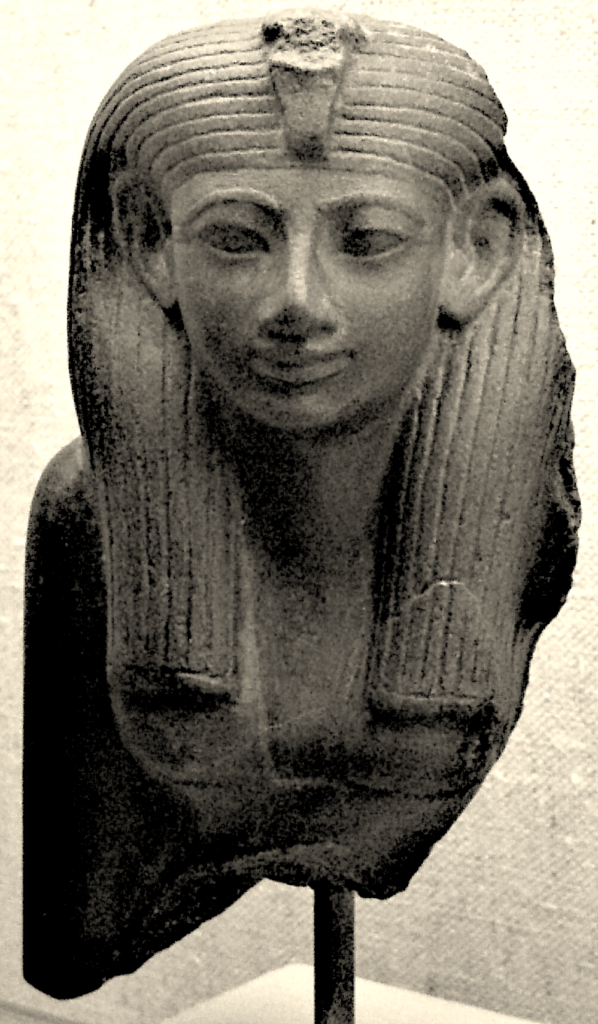
To Be a Female Pharaoh
Hatshepsut was born circa 1508 BC. She was part of Egypt’s 18th Dynasty which was founded by Ahmosis I and became notable for several reasons. For starters, it also included other well-known historical figures such as Tutankhamun and Nefertiti. More importantly, though, it was the first dynasty of the so-called New Kingdom, a period in ancient Egyptian history which is considered one of its “Golden Ages.” Some even hail it as the most prosperous time for the empire. This is debatable – others could argue that the Old Kingdom which was defined by the construction of the pyramids represented the true halcyon days of Egypt – but one thing that’s certain is that, after the New Kingdom ended, the empire experienced steady decline and would never again reach the same heights.
This dynasty is also known as the Thutmosid Dynasty because several of the first pharaohs were named Tuthmosis, or Thutmose, however you prefer. Hatshepsut herself was the daughter of Tuthmosis I, stepsister (and wife) of Tuthmosis II, and stepmother of Tuthmosis III.
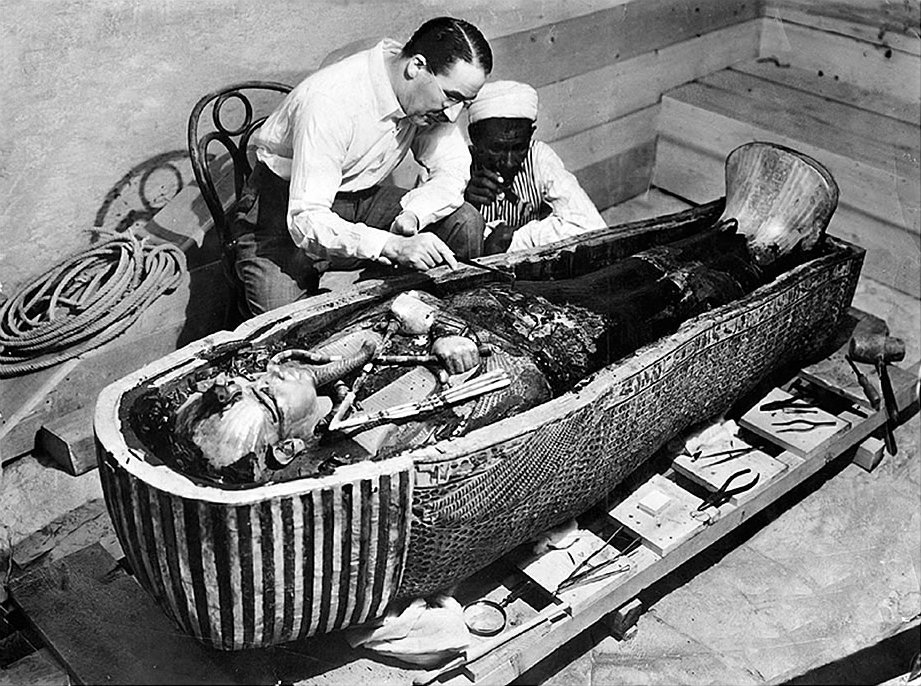
Speaking of names, we already gave a brief rundown on the naming conventions for pharaohs in our Tutankhamun video which you can check out if you haven’t seen yet. Basically, the full royal titulary included five separate names. Our pharaoh today typically went by Hatshepsut which was part of her personal name, but she was also often referred to by her throne name of Maatkare.
Hatshepsut is sometimes identified as the first female pharaoh and this is not really true. She is certainly the first on whom we have good information and you can make a strong case that she was the greatest female pharaoh, but she was not the first.
Unfortunately, we cannot say with accuracy who was the first because there is a lot of uncertainty surrounding the rulers of the earliest dynasties. There were plenty of female regents who ruled as guardians of child monarchs until they came of age. However, as early as the First Dynasty, it is possible that queens such as Merneith or Neithhotep may have ruled, at least for a short while, as pharaohs in their own right.
The first one on whom we have pretty solid evidence is Sobekneferu. After her brother, Amenemhat IV, died without a male heir, she took the throne and ruled for almost four years. Statues and inscriptions of Sobekneferu depict her with the full royal regalia and titles of a pharaoh. Like her brother, she also did not have any heirs so her death also brought the end of the 12th Dynasty.
Her Rise to Power
Hatshepsut was the daughter of Pharaoh Tuthmosis I and his Great Royal Wife, Ahmose. It was common for pharaohs to have multiple wives, but only one was the main wife who had certain authority and performed functions we would associate with a queen. Normally, the heir of the pharaoh was also the son of the Great Royal Wife, but this was not always the case.
Indeed, that was not what we had here. Tuthmosis II succeeded to the throne after his father’s death circa 1493 BC, but he was not the son of Ahmose, but rather a secondary wife called Mutnofret. The new pharaoh married his stepsister Hatshepsut when she was about 12 years old. They only had one child that we know of, a daughter called Neferure. The pharaoh’s other known child was his heir, Tuthmosis III, whom he had with his secondary wife Iset.
The reign of Tuthmosis II is one full of questions, including how long it actually lasted. The traditional length which comes from ancient sources is 13 to 14 years, but some modern Egyptologists argue that it may have been a full decade shorter. Assuming the older version, then the pharaoh would have died in 1479 BC. Technically, he was succeeded by his son, Tuthmosis III, but the new king was only two or three years old so his stepmother, the Great Royal Wife Hatshepsut, ruled as his regent.
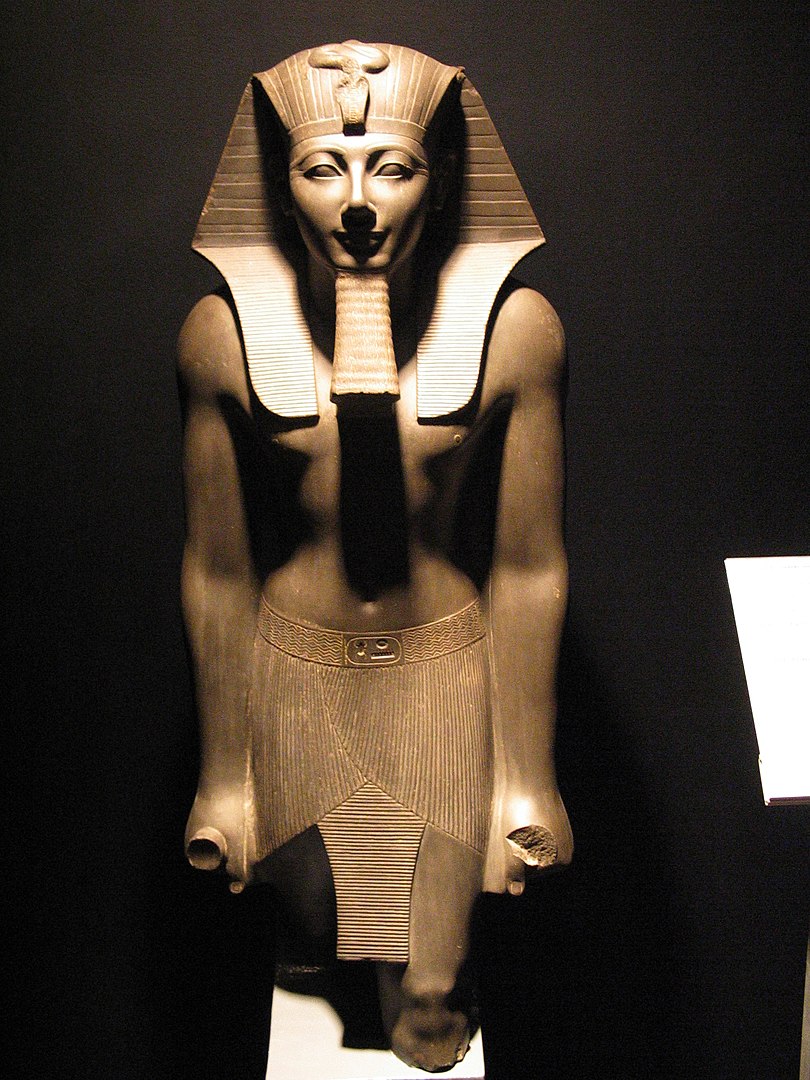
So far, everything went according to protocol, but Hatshepsut was expected to cede all authority when Tuthmosis came of age. She didn’t, though. Instead, she took the power for herself and became a fully fledged pharaoh. Unfortunately, we don’t have the complete details of her rise to the throne. We don’t know if it was something gradual as Hatshepsut kept awarding herself more and more authority or if she took over in one fell swoop. We do know that in the early years of her regency, she still used traditional titles such as “King’s Chief Wife” or “God’s Wife” and was portrayed sitting behind or to the side of the young pharaoh. However, around the seventh year of Tuthmosis’s reign, she began being depicted as the King of Egypt, with all the titles and regalia that came with it.
What would have been nice to know is how the people of Egypt reacted to Hatshepsut’s power play. She ruled as pharaoh for well over a decade so, clearly, they weren’t that up in arms about it, but that may also be due to the fact that she took extra steps to gain their approval. For starters, Hatshepsut established her divine legacy, which was easy to do since she was the daughter of Tuthmosis I, and she also claimed that it was always his will for her to rule alongside her stepbrother.
Afterwards, she obtained the support of the high officials. How exactly she did this, we don’t know, probably with bribes and promotions, but we do know the name of one man who achieved great status during her reign. His name was Senenmut and he was, among others, the Great Treasurer, the Chief Royal Architect, and the Chief Steward of the King’s Daughter. Because of his swift rise to power, there has been speculation that he and Hatshepsut might have been lovers, but there is no proof of this. His true legacy is the mortuary temple that he designed and built for Hatshepsut which remains, even today, among the most recognizable examples of ancient Egyptian architecture. Moreover, there was also the ceiling decoration of his own tomb which contains a celestial diagram and represents one of the most detailed displays of Egyptian astronomy.
The last step in Hatshepsut’s process to secure power was the most unusual as it had not been employed by any of the other female pharaohs – Hatshepsut portrayed herself as a man. There are statues and inscriptions of her where she was clearly depicted with a male body and described using male pronouns. She even had the fake, pointy beard that we see on a lot of pharaohs. That being said, this practice wasn’t universal and we also have statues where Hatshepsut is shown as a woman, as well as inscriptions where she used feminine titles such as the “Female Horus” or “Daughter of Ra.” Perhaps once she felt that her position was secure, she abandoned the custom.
The Reign of the Pharaoh
Now we move on to Hatshepsut’s motivation for her power grab. Many historians believe she did it purely to satisfy her ambition. In fact, when Hatshepsut’s story was first being unraveled about a century ago, she was portrayed in a very negative light. Scholars of that time accused her of acts of deception and deviant behavior. They called her the “vilest type of usurper” and a “vain, ambitious, and unscrupulous woman.” They said that her husband, Tuthmosis II, was a frail and weak ruler whom she easily pushed around and manipulated while the scheming Senenmut was her co-conspirator and lover. Meanwhile, Tuthmosis III grew up loathing his stepmother and took revenge on her after she died by trying to erase her name from history. It’s a compelling story where Hatshepsut portrays the villain, but one that has fallen out of favor with today’s scholars who consider it based more on the preconceptions of the time rather than hard proof.
While it is possible, even likely, that it was Hatshepsut’s desire for power which determined her actions, to say that she was a deviant, ruthless usurper is a tad too far. After all, if she was really so cold-blooded, she would have found a way to get rid of her stepson since he was the biggest threat to her power, especially after he came of age, but she never did. She didn’t threaten or persecute him. Tuthmosis was allowed to do as he pleased. He first trained as a soldier and then became the commander of the Egyptian army.
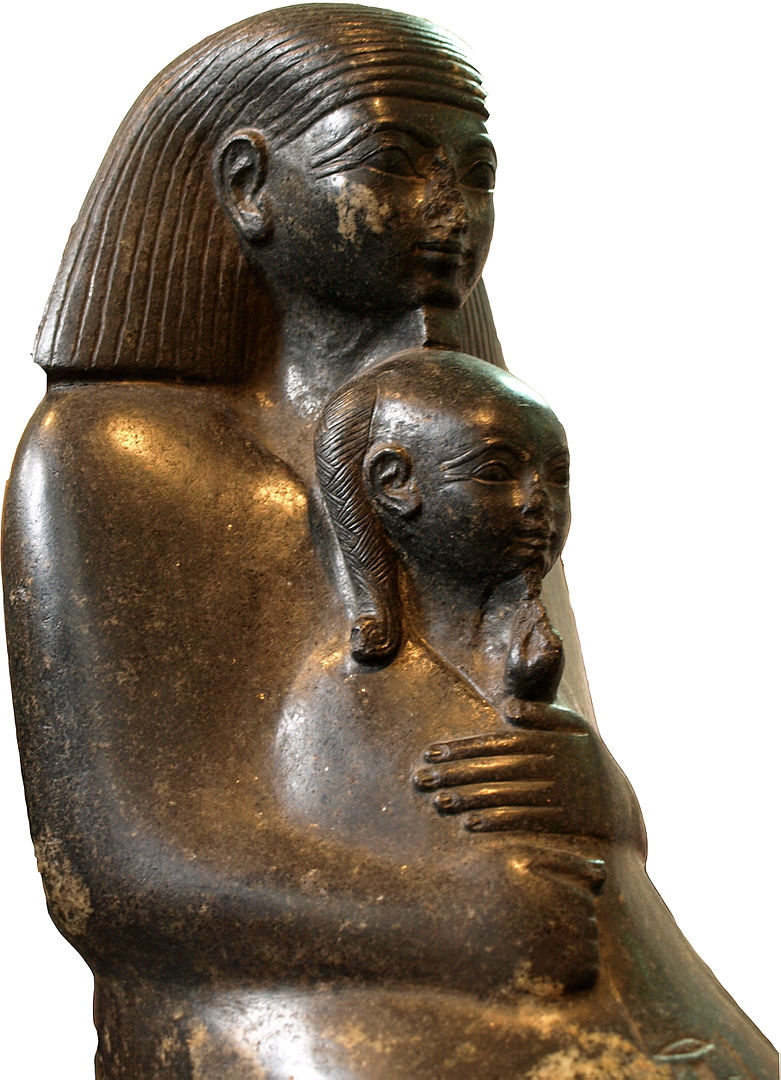
Credit: User:Captmondo (Own work (photo)), CC BY-SA 3.0
In fact, some historians opine that Hatshepsut did exactly the opposite, that she took power during a political crisis to protect herself and Tuthmosis from another pretender to the throne from a different branch of the royal family. Once she did it, it was a lifetime gig so she couldn’t surrender power even if she wanted to. Or maybe she was telling the truth all along when she said that her father wanted her to succeed as pharaoh. It’s unlikely, but not impossible.
Motivations aside, let’s talk about Hatshepsut’s actual reign. Was it any good? Well, in fact, it was, and historians describe it as a period of prosperity for Egypt. It was also relatively peaceful. There is mention of some military expeditions, but we don’t know any significant details. Because they were so poorly documented, scholars opine that Hatshepsut did it more out of a sense of obligation, feeling that it was her duty to continue the conquests of her father.
The true triumphs of Hatshepsut’s reign as pharaoh came from trade and construction. According to records, she re-established a network with one of their former trade partners during the Middle Kingdom, a mysterious land known as Punt. An ancient inscription says that the pharaoh’s ships returned filled with ebony, ivory, myrrh, cinnamon wood, and the “green gold of Emu” aka electrum. Nowadays, we’re not even sure where Punt was exactly. Best guesses suggest southeast of Egypt along the Red Sea coast over parts of modern countries such as Somalia, Eritrea, and Sudan.
Hatshepsut was also a prolific builder. The age of the pyramids might have been over, but she wanted to show that Egypt was still capable of grand constructions. She started off with monuments at the Temple of Karnak. There, she erected twin 100-ft tall obelisks which, at the time, were the tallest in the world. She was clearly a fan of these giant stone pillars as she ordered the construction of several more throughout her reign. The biggest of them all cracked while it was being carved and it was simply abandoned in its quarry in Aswan. It has since become known as the Unfinished Obelisk and not only is it still there today, but it has provided us with unique insight into how the ancient Egyptian stone workers built these monuments.
Of course, Hatshepsut’s masterpiece was her mortuary temple, the Djeser-Djeseru or “Holy of Holies.” It had three levels decorated with reliefs and statues. Each level had colonnades which told of Hatshepsut’s triumphs. The Birth Colonnade, for example, presented her divine creation and how the god Amun was her true father. The Punt Colonnade, as you might expect, detailed how she, once again, brought riches from the Land of Punt back to Egypt. There were several temples and chapels dedicated to the gods. There were also several tombs located in proximity, such as that of Senenmut, the chief architect of her mortuary temple. For unknown reasons, he was never placed inside his tomb and we do not know where he is buried. Speaking of which…
Where Is Hatshepsut’s Mummy?
As with many pharaohs, the story of Hatshepsut has continued into modern times thanks to archaeologists finding her tomb. However, her contemporary tale is a long and complicated one that stands out from the rest because it has been developing for over 200 years.
Hatshepsut died in 1458 BC and was buried in a royal tomb dubbed KV20, originally alongside her father, Thutmosis I. The tomb itself is notable because Egyptologists believe it may have been the first of its kind built in the region known today as the Valley of the Kings.
The first mention we have of the tomb in modern times actually comes to us courtesy of Napoleon. Maybe not him personally, but the scientific expedition he sent there in 1799. It was part of his campaign into Egypt and Syria which mostly consisted of him fighting the Ottoman and the English Empires. On the military side, the campaign was a flop – Napoleon failed to conquer Syria and, while he did capture Egypt, he later had to surrender it in order to withdraw.
On the scientific side, however, it turned out to be one of the most significant expeditions in history. A large contingency of 167 engineers and scientists from all areas of study traveled to Egypt. They mapped the area and recovered thousands of items. Of particular importance was the discovery of one artifact by a young engineer named Pierre-François Bouchard – an artifact without which we would have never been able to understand the language, traditions, and history of the Egyptians – the Rosetta Stone. These discoveries triggered renewed interest in ancient Egypt back in Europe and, more or less, helped establish the field of Egyptology.
As far as KV20 was concerned, the French found it and mapped it, but it was buried under rubble so they did not explore it. In 1817, pioneering Italian Egyptologist Giovanni Battista Belzoni also made note of the tomb’s location but, like before, he did not have the time, resources, or disposition to excavate it. By the way, that Belzoni was quite a character and lived a fascinating life, one you can learn about in detail in the video we did on him a while back.
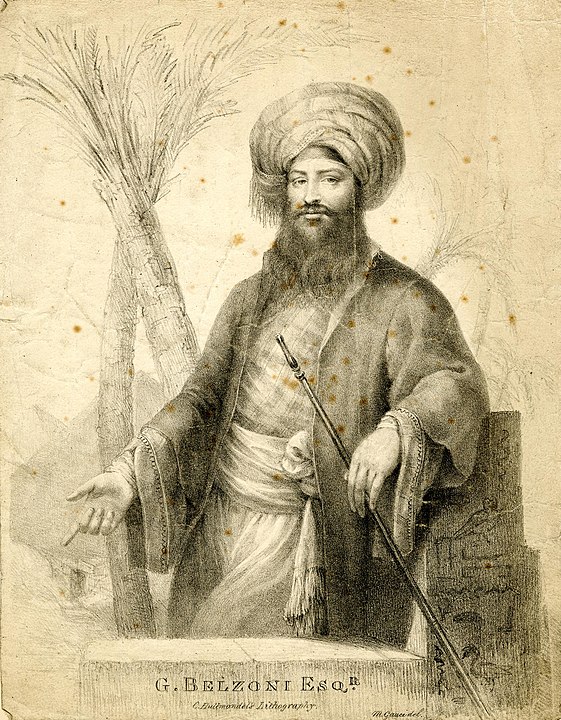
Getting back to Hatshepsut, it wasn’t until 1825 that an attempt was made to excavate her tomb by British scholar James Burton. He only made it as far as the first chamber. Afterwards came German Egyptologist Karl Richard Lepsius in 1844 who mapped out parts of the tomb but, again, failed to make any significant progress. It wasn’t until 1904 that someone finally managed to clear out all the debris and completely excavate KV20 and that someone was Howard Carter, the same archaeologist who would discover the tomb of Tutankhamun 18 years later. Carter completely cleaned out the tomb of all its contents, but afterwards came the hard part of trying to make sense of what he found.
There were quite a few artifacts which had inscriptions mentioning Hatshepsut as the “King of Upper and Lower Egypt,” cementing the idea that she served as pharaoh in her own right and not just as regent. However, what puzzled Egyptologists was the presence of two sarcophagi…but no mummies. Both had been built for Hatshepsut, yet neither one contained any remains.
The mystery of why there were two coffins was solved relatively easily when archaeologists translated the hieroglyphics. Part of the inscription said “ …long live the Female Horus… Hatchepsut-Khnemet-Amun! May she live forever! She made it as her monument to her father whom she loved…Thutmosis the justified.” Basically, the first sarcophagus had been built for Hatshepsut, but then she refurbished it for her father so that they would be buried together. However, Tuthmosis I was later removed from the sarcophagus and placed inside another tomb, KV38. This was supposed to be a grander mausoleum more befitting someone of his stature, but this tomb was discovered and completely plundered by looters.
That still left one big question: What happened to Hatshepsut? Her remains were probably removed alongside those of her father, but where were they?
Over the decades, several potential candidates were put forward. Hatshepsut became similar to Nefertiti, another famous Egyptian queen whose remains have yet to be found. Every time a new female mummy was discovered that was about the right age, people speculated that she might be the long-lost pharaoh.
One of those candidates was a nameless mummy discovered in 1903, also by Howard Carter, in Tomb KV60. This was a modest tomb which belonged to Sitre In, a woman who held the title of royal wet nurse to Hatshepsut. Her remains were also located inside the crypt so this begged the question of who was the second mummy?
Egyptologist Elizabeth Thomas was the first to speculate in the 1960s that the unidentified mummy might be Hatshepsut. Back then, however, technology wasn’t ready yet to support her hypothesis. It wasn’t until last decade that we finally got some evidence to back up the idea. Besides the mummy, archaeologists had previously recovered other items belonging to Hatshepsut from her mortuary temple. Among them was a wooden box with her name on it which contained a preserved molar purported to be that of the pharaoh. In 2007, forensic orthodontists took the tooth and compared it to several mummies believed to be Hatshepsut to see if any of them matched. Indeed, the one found in KV60 fit the bill exactly, prompting many scholars to proclaim that, at long last, Hatshepsut had been found. To strengthen their argument, DNA tests also showed that the mummy shared genetic similarities to Ahmose-Nefertari, the first queen of the 18th Dynasty. That’s not conclusive, but it did show that they were related and, therefore, the KV60 mummy came from a royal bloodline. This proof was enough for many Egyptologists, although plenty of others remain skeptical to this day.
Death & Disappearance
Let’s assume, like many others did, that the mummy found in KV60 is, indeed, Hatshepsut. In that case, we can also start talking about her cause of death. Ancient sources are quiet on the subject as the pharaoh simply disappeared from the historical record, although it is generally presumed that she died in her 22nd regnal year.
If the mummy is Hatshepsut, then she wasn’t exactly the peak of good health. Shocking, I know. The pharaoh was an overweight middle-aged woman with arthritis, bad skin, bad teeth, she may have suffered from diabetes and probably died of skin cancer. Worst of all, she may have given herself cancer by using a carcinogenic skin treatment.
In the same place that archaeologists found the wooden box with Hatshepsut’s tooth, they also recovered a flask. At first, they thought it originally contained perfume, but later they concluded that it was some sort of lotion used to treat a skin condition like psoriasis or eczema. It contained traces of harmless ingredients such as oils and fatty acids, but also a tar residue that could cause cancer. It’s impossible to say how long the pharaoh used the lotion for, but it is definitely possible that she inadvertently poisoned herself to alleviate the symptoms of her skin disease.

Credit: Osama Shukir Muhammed Amin FRCP(Glasg) – Own work, CC BY-SA 3.0
That could potentially solve the riddle of Hatshepsut’s death, but there is still the mystery of her disappearance. By all accounts, Hatshepsut was condemned to damnatio memoriae after death, the process where her name and her actions were removed from the historical record to try and make it look like she never existed. The question is “Why?”
In this regard, scholars only have ideas and speculations. Many have pointed the finger at the obvious suspect, her stepson, Tuthmosis III, or possibly his son and successor, Amenhotep II (or even both of them).
The motives were varied. We have no document or artifact to suggest how Tuthmosis felt about his stepmother, but he could have resented her for, basically, usurping his power when she was just supposed to rule as regent.
He also could have wanted to eliminate her reign in order to create a more direct lineage to his father and grandfather, Tuthmosis II and Tuthmosis I. If that’s the case, though, the damnatio memoriae was more likely ordered by Amenhotep than his father. Tuthmosis III became a great pharaoh in his own right and his claim to the throne was unquestionable. In fact, he was ancient Egypt’s most successful military ruler and created the largest Egyptian empire in history and he is also someone you will probably see on this channel in the near future. Amenhotep II, on the other hand, was not his father’s first choice as successor. He was not his firstborn son, nor was he given birth by Tuthmosis’s Great Royal Wife, Satiah. However, the original heir, Prince Amenemhat, and his mother both died, thus allowing Amenhotep to take the throne. The pharaoh could have felt that his royal claim was not as strong as it could be, so he sought out to create a direct lineage to the first rulers of the 18th dynasty and eliminate outliers, by which we mean Hatshepsut.
Or it could be that the motive was far less personal and it simply represented a return to tradition. Hatshepsut’s reign, even though it was successful and helped the empire prosper, went against the norm. Some argue that it was a problem exactly because it was successful, as it showed Egyptians that women could make good pharaohs, too, and they couldn’t have that, could they?
Whatever the reason might have been and whoever may have wanted Hatshepsut erased from the history books, the important thing is that they did not do a very good job. Most of the small artifacts that had her image or inscriptions with her name were left alone. Even the bigger stuff like statues or stelae were just smashed up and buried outside her temple. When archaeologists excavated the area in the 19th and 20th centuries, they were able to recover enough information to restore Hatshepsut’s name and allow her to, once again, take her rightful place as one of the greatest pharaohs in history.



